This article was co-authored by Daron Cam. Daron Cam is an Academic Tutor and the Founder of Bay Area Tutors, Inc., a San Francisco Bay Area-based tutoring service that provides tutoring in mathematics, science, and overall academic confidence building. Daron has over eight years of teaching math in classrooms and over nine years of one-on-one tutoring experience. He teaches all levels of math including calculus, pre-algebra, algebra I, geometry, and SAT/ACT math prep. Daron holds a BA from the University of California, Berkeley and a math teaching credential from St. Mary's College.
There are 11 references cited in this article, which can be found at the bottom of the page.
wikiHow marks an article as reader-approved once it receives enough positive feedback. This article has 43 testimonials from our readers, earning it our reader-approved status.
This article has been viewed 900,215 times.
Learning algebra can seem intimidating, but once you get the hang of it, it’s not that hard! You just have to follow the order for completing parts of the equation and keep your work organized to avoid mistakes!
Steps
Learning Basic Algebra Rules
-
1Review your basic math operations. To start learning algebra, you'll need to know basic math skills such as adding, subtracting, multiplying and dividing.[1] This primary/elementary school math is essential before you start learning algebra.[2] If you don't have these skills mastered, it will be tricky to tackle the more complex concepts taught in algebra. If you need a refresher on these operations, try our article on basic math skills.
- You don't necessarily need to be great at doing these basic operations in your head to do algebra problems. Many algebra classes will allow you to use a calculator to save time when doing these simple operations. You should, however, at least know how to do these operations without a calculator for when you aren't allowed to use one.
-
2Know the order of operations. One of the trickiest things about solving an algebra equation as a beginner is knowing where to start. Luckily, there's a specific order for solving these problems: first do any math operations in parentheses, then do exponents, then multiply, then divide, then add, and finally subtract. A handy tool for remembering this order of operations is the acronym PEMDAS.[3] Learn how to apply the order of operations here. To recap, the order of operations is:
- Parentheses
- Exponents
- Multiplication
- Division
- Addition
- Subtraction
- The order of operations is important in algebra because doing the operations in an algebra problem in the wrong order can sometimes affect the answer. For instance, if we're dealing with the math problem 8 + 2 × 5, if we add 2 to 8 first, we get 10 × 5 = 50, but if we multiply 2 and 5 first, we get 8 + 10 = 18. Only the second answer is correct.
Advertisement -
3Know how to use negative numbers. In algebra, it's common to use negative numbers, so it's smart to review how to add, subtract, multiply, and divide negatives before starting to learn algebra.[4] Below are just a few negative number basics to keep in mind — for more information, see our articles on adding and subtracting negative numbers and dividing and multiplying negative numbers.
- On a number line, a negative version of a number is the same distance from zero as the positive, but in the opposite direction.
- Adding two negative numbers together makes the number more negative (in other words, the digits will be higher, but since the number is negative, it counts as being lower)
- Two negative signs cancel out — subtracting a negative number is the same as adding a positive number
- Multiplying or dividing two negative numbers gives a positive answer.
- Multiplying or dividing a positive number and a negative number gives a negative answer.
-
4Know how to keep long problems organized. While simple algebra problems can be a snap to solve, more complicated problems can take many, many steps. To avoid errors, keep your work organized by starting a new line every time you make a step toward solving your problem. If you're dealing with a two-sided equation, try to write all the equals signs ("="s) underneath each other.[5] This way, if you make a mistake somewhere, it'll be much easier to find and correct.
- For example, to solve the equation 9/3 - 5 + 3 × 4, we might keep our problem organized like this:
- 9/3 - 5 + 3 × 4
- 9/3 - 5 + 12
- 3 - 5 + 12
- 3 + 7
- 10
- For example, to solve the equation 9/3 - 5 + 3 × 4, we might keep our problem organized like this:
Understanding Variables
-
1Look for symbols that aren't numbers. In algebra, you'll start to see letters and symbols appear in your math problems, rather than just numbers. These are called variables. Variables aren't as confusing as they may first seem - they're just ways of showing numbers with unknown values.[6] Below are just a few common examples of variables in algebra:
- Letters like x, y, z, a, b, and c
- Greek letters like theta, or θ
- Note that not all symbols are unknown variables. For instance, pi, or π, is always equal to about 3.14159.
-
2Think of variables as "unknown" numbers. As mentioned above, variables are basically just numbers with unknown values.[7] In other words, there's some number that can go in place of the variable to make the equation work. Usually, your goal in an algebra problem is to figure out what the variable is — think of it as a "mystery number" that you're trying to discover.
- For example, in the equation 2x + 3 = 11, x is our variable. This means that there's some value that goes in the place of x to make the left side of the equation equal 11. Since 2 × 4 + 3 = 11, in this case, x = 4.
- An easy way to start understanding variables is to replace them with question marks in algebra problems. For example, we might re-write the equation 2 + 3 + x = 9 as 2 + 3 + ? = 9. This makes it easier to understand what we're trying to do — we just need to find out what number to add to 2 + 3 = 5 to get 9. The answer is again 4, of course.
-
3Watch for recurring variables. If a variable appears more than once, simplify the variables. What do you do if the same variable appears more than once in the equation? Though this situation may seem tricky to solve, you can actually treat variables how you'd treat normal numbers — in other words, you can add them, subtract them, and so on as long as you only combine variables that are alike. In other words, x + x = 2x, but x + y doesn't equal 2xy.
- For example, let's look at the equation 2x + 1x = 9. In this case, we can add 2x and 1x together to get 3x = 9. Since 3 x 3 = 9, we know that x = 3.
- Note again that you can only add the same variables together. In the equation 2x + 1y = 9, we can't combine 2x and 1y because they are two different variables.
- This is also true for when one variable has a different exponent than another. For instance, in the equation 2x + 3x2 = 10, we can't combine 2x and 3x2 because the x variables have different exponents. See How to Add Exponents for more information.
Learning to Solve Equations by "Canceling"
-
1Try to get the variable by itself in algebra equations. Solving an equation in algebra usually means finding out what the variable is. Algebra equations are usually set up with numbers and/or variables on both sides, like this: x + 2 = 9 × 4. To figure out what the variable is, you need to get it by itself on one side of the equals sign. Whatever is left on the other side of the equals sign is your answer.
- In the example (x + 2 = 9 × 4), to get x by itself on the left side of the equation, we need to get rid of the "+ 2". To do this, we'll simply subtract 2 from that side, leaving us with x = 9 × 4. However, to keep both sides of the equation equal, we also need to subtract 2 from the other side. This leaves us with x = 9 × 4 - 2. Following the order of operations, we multiply first, then subtract, giving us an answer of x = 36 - 2 = 34.
-
2Cancel addition with subtraction (and vice versa). As we just saw above, getting x by itself on one side of the equals sign usually means getting rid of the numbers next to it. To do this, we perform the "opposite" operation on both sides of the equation. For instance, in the equation x + 3 = 0, since we see a "+ 3" next to our x, we'll put a "- 3" on both sides. The "+ 3" and "- 3", leaving x by itself and "-3" on the other side of the equals sign, like this: x = -3.
- In general, addition and subtraction are like "opposites" — do one to get rid of the other. See below:
- For addition, subtract. Example: x + 9 = 3 → x = 3 - 9
- For subtraction, add. Example: x - 4 = 20 → x = 20 + 4
- In general, addition and subtraction are like "opposites" — do one to get rid of the other. See below:
-
3Cancel multiplication with division (and vice versa). Multiplication and division are a little harder to work with than addition and subtraction, but they have the same "opposite" relationship. If you see a "× 3" on one side, you'll cancel it by dividing both sides by 3, and so on.
- With multiplication and division, you must perform the opposite operation on everything on the other side of the equals sign, even if it's more than one number. See below:
- For multiplication, divide. Example: 6x = 14 + 2→ x = (14 + 2)/6
- For division, multiply. Example: x/5 = 25 → x = 25 × 5
- With multiplication and division, you must perform the opposite operation on everything on the other side of the equals sign, even if it's more than one number. See below:
-
4Cancel exponents by taking the root (and vice versa). Exponents are a fairly advanced pre-algebra topic — if you don't know how to do them, see our basic exponent article for more information. The "opposite" of an exponent is the root that has the same number as it. For example, the opposite of the 2 exponent is a square root (√), the opposite of the 3 exponent is the cube root (3√), and so on.[8]
- It may be a little confusing, but, in these cases, you take the root of both sides when dealing with an exponent. On the other hand, you take the exponent of both sides when you're dealing with a root. See below:
- For exponents, take the root. Example: x2 = 49 → x = √49
- For roots, take the exponent. Example: √x = 12 → x = 122
- It may be a little confusing, but, in these cases, you take the root of both sides when dealing with an exponent. On the other hand, you take the exponent of both sides when you're dealing with a root. See below:
Sharpening Your Algebra Skills
-
1Use pictures to make problems clearer. If you're having a hard time visualizing an algebra problem, try using diagrams or pictures to illustrate your equation. You can even try using a group of physical objects (like blocks or coins) instead if you have some handy.[9]
- For example, let's solve the equation x + 2 = 3 by using boxes (☐)
- x +2 = 3
- ☒+☐☐ =☐☐☐
- At this point, we'll subtract 2 from both sides by simply removing 2 boxes (☐☐) from both sides:
- ☒+☐☐-☐☐ =☐☐☐-☐☐
- ☒=☐, or x = 1
- As another example, let's try 2x = 4
- ☒☒ =☐☐☐☐
- At this point, we'll divide both sides by two by separate the boxes on each side into two groups:
- ☒|☒ =☐☐|☐☐
- ☒ = ☐☐, or x = 2
- For example, let's solve the equation x + 2 = 3 by using boxes (☐)
-
2Use "common sense checks" (especially for word problems). When converting a word problem into algebra, try to check your formula by plugging in simple values for your variable. Does your equation make sense when x=0? When x=1? When x = -1? It's easy to make simple mistakes by writing down p=6d when you mean p=d/6, but these are easily caught if you do a quick sanity check on your work before going further.
- For example, let's say we're told that a football field is 30 yards (27.4 m) longer than it is wide. We use the equation l = w + 30 to represent this. We can test whether this equation makes sense by plugging in simple values for w. For instance, if the field is w = 10 yards (9.1 m) wide, it will be 10 + 30 = 40 yards (36.6 m) long. If it's 30 yards (27.4 m) wide, it will be 30 + 30 = 60 yards (54.9 m) long, and so on. This makes sense — we'd expect the field to get longer as it gets wider, so this equation is reasonable.
-
3Be aware that answers won't always be integers in algebra. Answers in algebra and other advanced forms of math aren't always round, easy numbers. They can often be decimals, fractions, or irrational numbers. A calculator can help you find these complicated answers, but keep in mind that your teacher may require you to give your answer in its exact form, not in an unwieldy decimal.
- For instance, let's say that we narrow down an algebra equation to x = 12507. If we type 12507 into a calculator, we'll get a huge string of decimals (plus, since the calculator's screen is only so large, it can't display the entire answer.) In this case, we may want to represent our answer as simply 12507 or else simplify the answer by writing it in scientific notation.
-
4Try expanding your skill. When you're confident with basic algebra, try factoring. One of the trickiest algebra skills of all is factoring — a sort of shortcut for getting complex equations into simple forms. Factoring is a semi-advanced algebra topic, so consider consulting the article linked above if you're having trouble mastering it. Below are just a few quick tips for factoring equations:
- Equations with the form ax + ba factor to a(x + b). Example: 2x + 4 = 2(x + 2)
- Equations with the form ax2 + bx factor to cx((a/c)x + (b/c)) where c is the biggest number that divides into a and b evenly. Example: 3y2 + 12y = 3y(y + 4)
- Equations with the form x2 + bx + c factor to (x + y)(x + z) where y × z = c and yx + zx = bx. Example: x2 + 4x + 3 = (x + 3)(x + 1).
-
5Practice, practice, practice! Progress in algebra (and any other kind of math) requires lots of hard work and repetition. Don't worry — by paying attention in class, doing all of your assignments, and seeking out help from your teacher or other students when you need it, algebra will begin to become second nature.
-
6Ask your teacher to help you understand tricky algebra topics. If you're having a hard time getting the hang of algebra, don't worry — you don't have to learn it on your own. Your teacher is the first person you should turn to with questions. After class, politely ask your teacher for help. Good teachers will usually be willing to re-explain the day's topic at an after-school appointment and may even be able to give you extra practice materials.[10]
- If, for some reason, your teacher can't help you, try asking them about tutoring options at your school.[11] Many schools will have some sort of after-school program that can help you get the extra time and attention you need to start excelling at your algebra. Remember, using free help that's available to you isn't something to be embarrassed about — it's a sign that you're smart enough to solve your problem!
Exploring Intermediate Topics
-
1Learn to graph x/y equations. Graphs can be valuable tools in algebra because they allow you to display ideas that you'd usually need numbers for in easy-to-understand pictures.[12] Usually, in beginning algebra, graphing problems are restricted to equations with two variables (usually x and y) and are done on a simple 2-D graph with an x axis and a y axis. With these equations, all you need to do is plug in a value for x, then solve for y (or do the reverse) to get two numbers that correspond to a point on the graph.
- For example, in the equation y = 3x, if we plug in 2 for x, we get y = 6. This means that the point (2,6) (two spaces to the right of center and six spaces above center) is part of this equation's graph.
- Equations with the form y = mx + b (where m and b are numbers) are especially common in basic algebra. These equations always have a slope of m and cross the y axis at y = b.
-
2Learn to solve inequalities. What do you do when your equation doesn't use an equals sign? Nothing much different than what you'd normally do, it turns out. For inequalities, which use signs like > ("greater than") and < ("less than"), just solve as normal. You'll be left with an answer that's either less than or greater than your variable.
- For instance, with the equation 3 > 5x - 2, we would solve just like we would for a normal equation:
- 3 > 5x - 2
- 5 > 5x
- 1 > x, or x < 1.
- This means that every number less than one works for x. In other words, x can be 0, -1, -2, and so on. If we plug these numbers into the equation for x, we'll always get an answer less than 3.
- For instance, with the equation 3 > 5x - 2, we would solve just like we would for a normal equation:
-
3Tackle quadratic equations. One algebra topic that many beginners struggle with is solving quadratic equations. Quadratics are equations with the form ax2 + bx + c = 0, where a, b, and c are numbers (except that a can't be 0.) These equations are solved with the formula x = [-b +/- √(b2 - 4ac)]/2a . Be careful — the +/- sign means you need to find the answers for adding and subtracting, so you can have two answers for these types of problems.
- As an example, let's solve the quadratic formula 3x2 + 2x -1 = 0.
- x = [-b +/- √(b2 - 4ac)]/2a
- x = [-2 +/- √(22 - 4(3)(-1))]/2(3)
- x = [-2 +/- √(4 - (-12))]/6
- x = [-2 +/- √(16)]/6
- x = [-2 +/- 4]/6
- x = -1 and 1/3
- As an example, let's solve the quadratic formula 3x2 + 2x -1 = 0.
-
4Experiment with systems of equations. Solving more than one equation at once may sound super-tricky, but when you're working with simple algebra equations, it's not actually that hard. Often, algebra teachers use a graphing approach for solving these problems. When you're working with a system of two equations, the solutions are the points on a graph that the lines for both equations cross at.
- For example, let's say we're working with a system that contains the equations y = 3x - 2 and y = -x - 6. If we draw these two lines on a graph, we get one line that goes up at a steep angle, and one that goes down at a mild angle. Since these lines cross at the point (-1,-5), this is a solution to the system.[13]
- If we want to check our problem, we can do this by plugging our answer into the equations in the system — a right answer should "work" for both.
- y = 3x - 2
- -5 = 3(-1) - 2
- -5 = -3 - 2
- -5 = -5
- y = -x - 6
- -5 = -(-1) - 6
- -5 = 1 - 6
- -5 = -5
- Both equations "check out," so our answer is right!
Sample Algebra Problems
Expert Q&A
-
QuestionWhat are the basics of algebra?
 Daron CamDaron Cam is an Academic Tutor and the Founder of Bay Area Tutors, Inc., a San Francisco Bay Area-based tutoring service that provides tutoring in mathematics, science, and overall academic confidence building. Daron has over eight years of teaching math in classrooms and over nine years of one-on-one tutoring experience. He teaches all levels of math including calculus, pre-algebra, algebra I, geometry, and SAT/ACT math prep. Daron holds a BA from the University of California, Berkeley and a math teaching credential from St. Mary's College.
Daron CamDaron Cam is an Academic Tutor and the Founder of Bay Area Tutors, Inc., a San Francisco Bay Area-based tutoring service that provides tutoring in mathematics, science, and overall academic confidence building. Daron has over eight years of teaching math in classrooms and over nine years of one-on-one tutoring experience. He teaches all levels of math including calculus, pre-algebra, algebra I, geometry, and SAT/ACT math prep. Daron holds a BA from the University of California, Berkeley and a math teaching credential from St. Mary's College.
Academic Tutor Basic math skills you learned in elementary or primary school are the fundamentals of algebra. This includes concepts like adding, subtracting, multiplying and dividing.
Basic math skills you learned in elementary or primary school are the fundamentals of algebra. This includes concepts like adding, subtracting, multiplying and dividing. -
QuestionHow do I solve x + 13 = 24?
 Community AnswerSubtract 13 from both sides to get x by itself. That makes the equation: x = 24 - 13 or: x = 11.
Community AnswerSubtract 13 from both sides to get x by itself. That makes the equation: x = 24 - 13 or: x = 11. -
QuestionWould 8X + 9 be the same as 8x X 9?
 Community AnswerNo, because the first equation asks for addition and the second equation asks for multiplication.
Community AnswerNo, because the first equation asks for addition and the second equation asks for multiplication.
References
- ↑ https://www.basic-mathematics.com/basic-operations.html
- ↑ Daron Cam. Academic Tutor. Expert Interview. 29 May 2020.
- ↑ https://www.mathsisfun.com/operation-order-pemdas.html
- ↑ https://www.mathsisfun.com/definitions/negative.html
- ↑ https://web.cs.ucdavis.edu/~amenta/w10/writingman.pdf
- ↑ https://www.techopedia.com/definition/1816/variable-mathematics
- ↑ https://www.britannica.com/topic/variable-mathematics-and-logic
- ↑ http://www.montereyinstitute.org/courses/DevelopmentalMath/COURSE_TEXT2_RESOURCE/U16_L1_T3_text_final.html
- ↑ https://www.smartickmethod.com/blog/math/operations-and-algebraic-thinking/algebra/singapore-bars-algebraic-equations/
- ↑ Daron Cam. Academic Tutor. Expert Interview. 29 May 2020.
- ↑ Daron Cam. Academic Tutor. Expert Interview. 29 May 2020.
- ↑ https://www.khanacademy.org/math/algebra-basics/alg-basics-graphing-lines-and-slope
- ↑ http://www.purplemath.com/modules/systlin1.htm
About This Article
To learn algebra, make sure you know the order of operations and how to use negative numbers. Next, get used to seeing letters, or variables, in math equations and remember that these letters are unknown numbers. In algebra, you're trying to figure out what number that variable equates to. Start by trying to isolate the variable using canceling, foiling, and other techniques, then solve the equation from there! To learn about quadratic equations and how to work with exponents, read on!



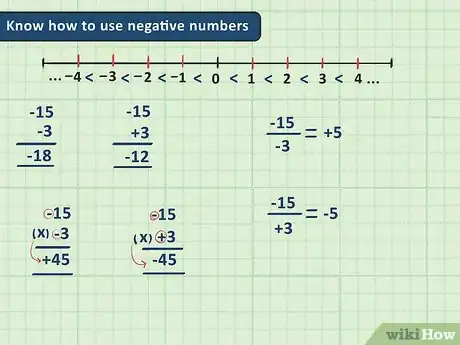
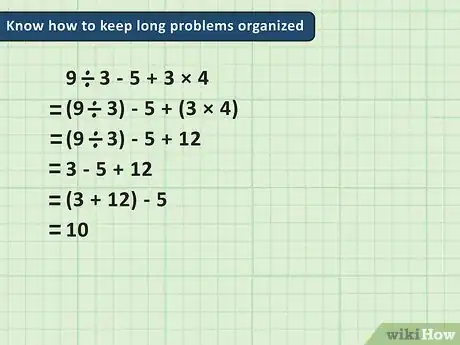
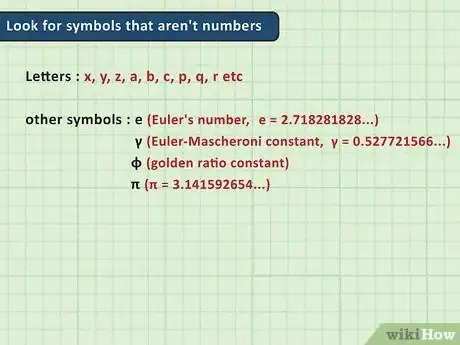
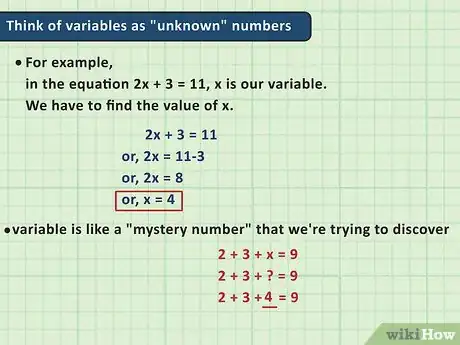
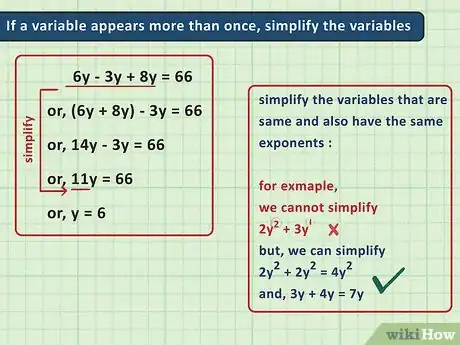
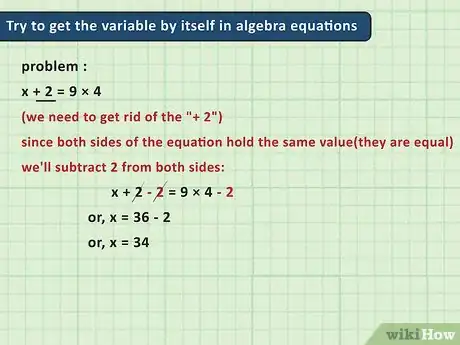
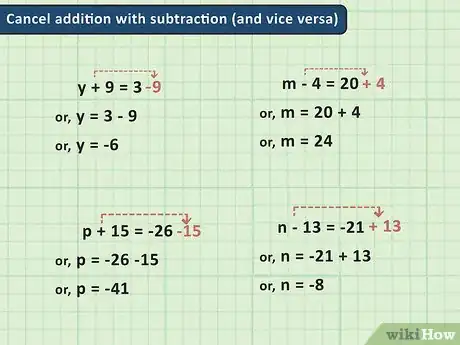
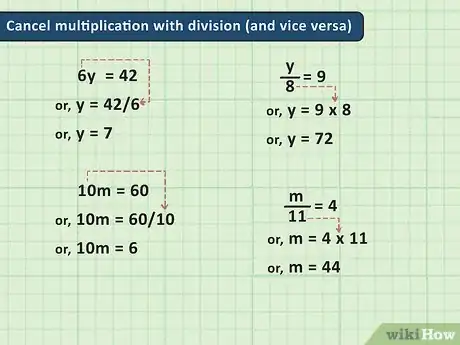
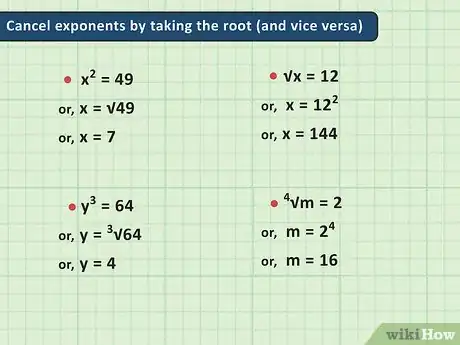
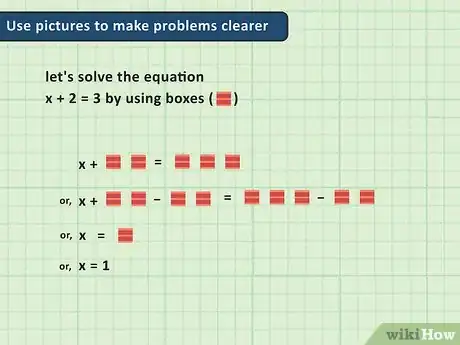
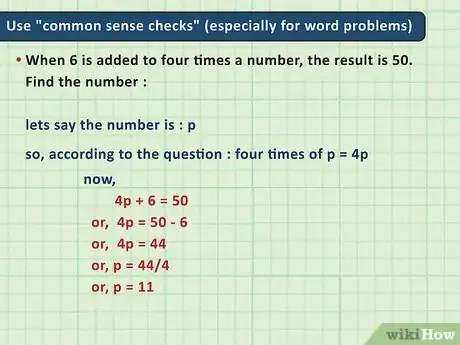
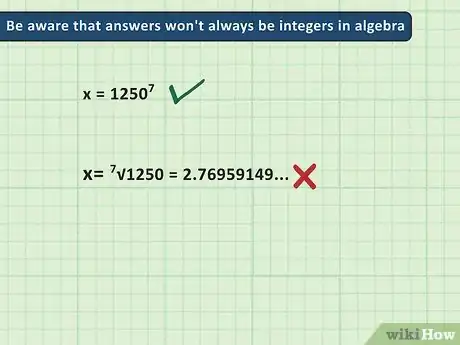
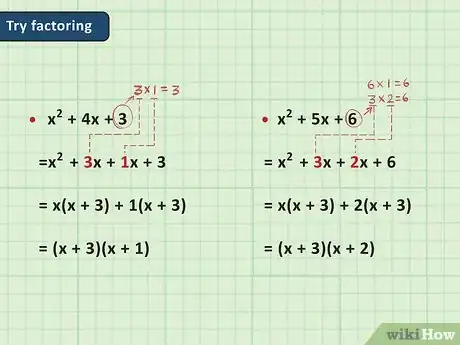
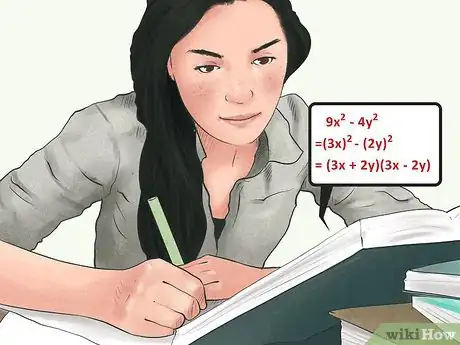
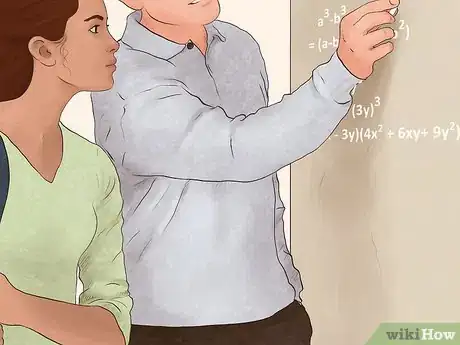
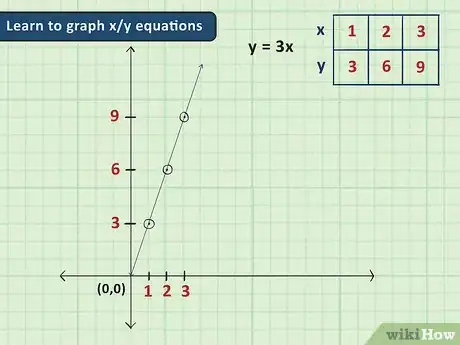
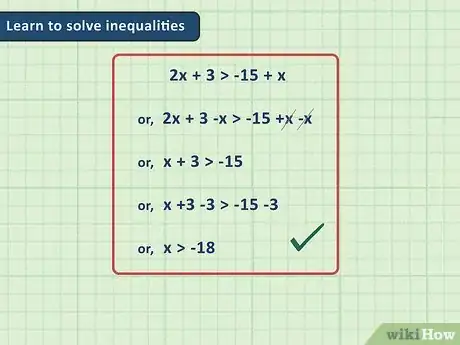
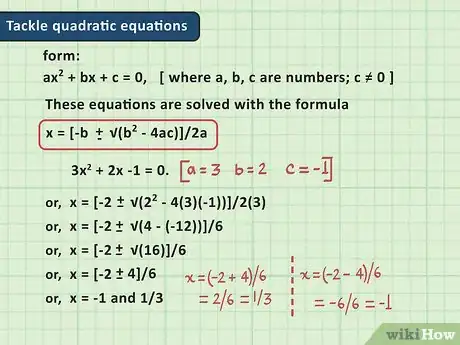
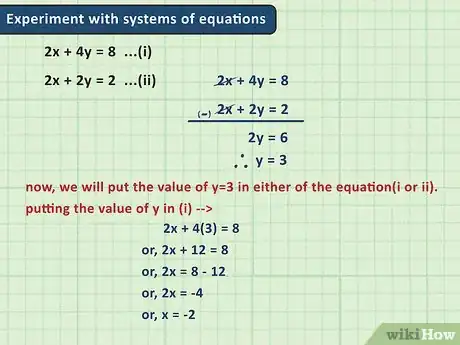

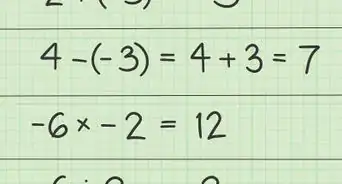
-Step-13.webp)





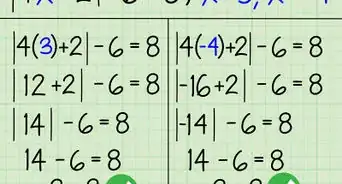





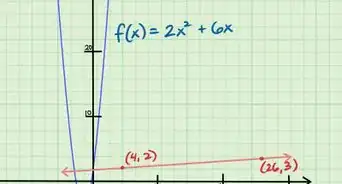









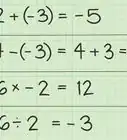
-Step-13.webp)




































